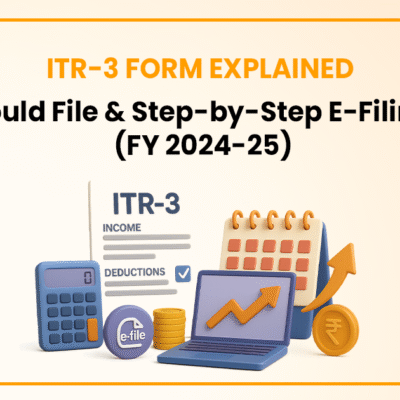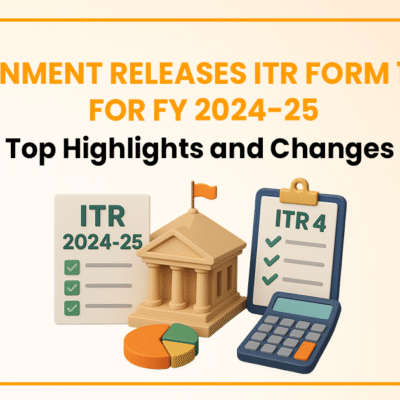Taxation of corporate reorganization is vital in the realm of business reorganizations, where substantial alterations occur in a company's structure or ownership. Be it through mergers, acquisitions, spin-offs, or other restructuring endeavors, grasping tax analytics holds importance for informed decision-making. These factors have significant influence over the ultimate prosperity and financial stability of the reorganized entities. In this blog, we will get to know about Tax issues in Business reorganization.
Overview
When a company goes through a reorganization or restructuring, it's like rearranging its furniture. They might merge with another company, split into different parts, or simply change their internal structure. The goal of Tax issues in Business reorganization is usually to become more efficient, reduce risk, or compete better in the market. This can impact jobs, government revenue, and the whole community.
Types of corporate reorganizations
- Merger: Two or more companies combine to form a single entity.
- Demerger: One company splits into separate entities.
- Slump sale: Selling a business unit as a whole to another entity.
- Internal reconstruction: Restructuring within the company, like changing ownership structure.
- Others: Insolvency (bankruptcy) and more exist.
Considerations for corporate reorganizations
- Substance over form: Ensure the reorganization has a genuine business purpose, not just tax avoidance.
- General Anti-Avoidance Rule (GAAR): The tax department may challenge if the sole purpose is tax benefit.
- Due diligence: Carefully assess the other entity involved in the transaction.
- Valuation: Determining the fair value of assets involved might require a professional.
- Mergers & Companies Act: Follow the specific process outlined in the Companies Act for mergers.
- Auditor's certificate: May be required under for certain types of reorganization.
- GST implications: Understand potential Goods and Services Tax (GST) liabilities.
- Accounting impacts: Closing the books of the merging company requires proper accounting procedures.
- Ind AS 103: This accounting standard might be relevant for certain business combinations.
Income Tax Analysis
When two businesses merge, the resulting combined entity, called the "successor entity," needs to manage taxes differently. The Income Tax Act 1961 and Income Tax Rules have specific rules for business reorganizations. According to Rule 12 AD, the successor entity must file a specific Income tax return (ITR) within six months from the merger date, so the act defines the tax implication of merger and acquisition.
For example - Imagine PVR Cinemas and INOX Movies merged to form PVR INOX Ltd (successor entity) in April 2022. PVR INOX Ltd needs to file an ITR by September 30, 2022. This ITR discloses details about the merger, completing the tax reporting process. Even with the ITR filed, the tax department can still request additional information about the merger, like the official merger plan ("scheme of merger") for tax data analytics.
Now, what are the tax consequences of a taxable merger? Can the tax department issue notices to companies that no longer exist (the merging companies)? A recent court case addressed this issue, highlighting that even though the merging companies no longer exist, the successor entity is responsible for any outstanding taxes from the previous entities.
PCIT vs Sony Mobile Communication India Private Ltd [2023] ITA no 115/2019(Delhi High Court)
This situation involves a company called Sony Ericsson Mobile Communications India Private Ltd, which merged with Sony India Private Ltd in April 2013. However, it seems there was an issue with how the tax authorities managed this merger. Let’s understand the tax considerations in merger and acquisition.
Here's a breakdown of the situation.
- Sony Ericsson Mobile merged with Sony India in April 2013, effectively ceasing to exist.
- The proper documents regarding the merger, including the sanction order and scheme of merger, were submitted to the tax authorities in December 2013.
- Despite the merger, the tax authorities apparently issued a notice to Sony Ericsson Mobile, the company that no longer existed.
- An assessment order, which determines the amount of tax owed, was also framed in the name of Sony Ericsson Mobile.
The problem is Tax notices and assessments should not be addressed to existing entities. Sending them to a company that doesn't exist creates confusion and unnecessary complications.
Fortunately, there's a solution:
- The law allows for correcting such mistakes. This law empowers authorities to rectify any clerical or arithmetical errors in an assessment order, including those related to the name of the taxpayer.
- The tax authorities can correct their mistake by issuing a new notice and assessment order addressed to the correct entity, which in this case is Sony India Private Ltd.
- Merging businesses need to be aware of their tax obligations and follow the legal procedures to avoid issues.
- While the successor entity files the ITR, the tax department can still request additional information to ensure everything is above board.
Tax Notice Sent to a Merged Company: A Case Breakdown
This case involves two companies, Mahagun Realtors (MRPL) and Mahagun India (MIPL). MRPL merged into MIPL by court order, meaning MRPL's responsibilities shifted to MIPL. The tax department had some concerns about MRPL's past financial records and issued a notice to them.
Here's the twist: MRPL no longer existed officially due to the merger. So, the question arose - can a notice be issued to a non-existent company?
The Supreme Court (SC) considered a similar case (Maruti Suzuki) but distinguished it. Unlike Maruti Suzuki, the tax department wasn't informed about the merger in this case.
Here's why the notice was considered valid:
- Even after merging into MIPL, MRPL filed a tax return (ITR) using its own PAN number for the relevant financial year.
- When asked about business reorganization in the ITR, MRPL marked "not applicable" in the amalgamation section.
- The SC concluded that even though MRPL stopped existing as a separate entity, the tax notice was valid because the merger wasn't properly disclosed while filing the tax return and MRPL still used its own PAN number, indicating it hadn't fully transitioned to MIPL for tax purposes.
So, Companies undergoing mergers or acquisitions need to clearly communicate these changes to the tax authorities to avoid confusion and potential issues like receiving notices addressed to non-existent entities.
Sun Pharma and Tamil Nadu Dadha Pharmaceuticals: A Tax Case
This case involves two Indian companies, Sun Pharma Industries Ltd (SPIL) and Tamil Nadu Dadha Pharmaceuticals (TNDPL). They underwent a legal process called amalgamation, where, essentially ceasing to exist as a separate entity. However, there were some disagreements about the tax implications of this merger. Here's a breakdown:
- Could TNDPL be taxed on money received from SPIL before the official amalgamation?
- TNDPL's argument: The money received should not be taxed because the merger hadn't happened yet at that point.
- High Court decision: The court didn't agree with TNDPL. They found that the companies tried to use the merger process to avoid taxes by selling shares to each other before officially merging. This way, they hoped to avoid taxes on the sale.
So, the court saw through their attempt and ruled that the sale of shares was not a legitimate part of the amalgamation process. Since the companies merged and TNDPL ceased to exist, the High Courts involved were not informed about the underlying transactions related to the share sale before approving the merger.
So here, two companies tried to use a legal process (amalgamation) to avoid paying taxes. The court saw through their attempt and held them responsible for the taxes they tried to avoid, and companies got caught. It's crucial to be honest and transparent during legal processes like business mergers to avoid such situations.
Conclusion
In essence, the role of tax issues in business reorganizations cannot be overstated, given their potential to shape the companies undergoing such transformations. By effectively addressing these tax implications, businesses can mitigate risks, enhance their financial standing, and pave the way for successful reorganization. Thus, consideration and strategic planning regarding tax matters are imperative for optimizing outcomes and ensuring the long-term viability of reorganized entities.
LegalWindow.in is a professional technology driven platform of multidisciplined experts like CA/CS/Lawyers spanning with an aim to provide concrete solution to individuals, start-ups and other business organisation by maximising their growth at an affordable cost. Our team offers expertise solutions in various fields that include Corporate Laws, Direct Taxations, GST Matters, IP Registrations and other Legal Affairs.
Categories
- Agreement Drafting (23)
- Annual Compliance (13)
- Change in Business (37)
- Company Law (150)
- Compliance (90)
- Digital Banking (3)
- Drug License (4)
- FEMA (17)
- Finance Company (42)
- Foreign Taxation (9)
- FSSAI License/Registration (15)
- GST (124)
- Hallmark Registration (1)
- Income Tax (214)
- Latest News (36)
- Miscellaneous (170)
- NBFC Registration (8)
- NGO (18)
- SEBI Registration (6)
- Section 8 Company (10)
- Start and manage a business (27)
- Startup/ Registration (134)
- Trademark Registration/IPR (48)
Recent Posts
- Major Upgrade: Breaking Down GST 2.0 September 15, 2025
- New Income Tax Bill 2025 August 27, 2025
- ITR-3 Form Explained: Who Should File & Step-by-Step E-Filing Guide (FY 2024-25) June 25, 2025
All Website Tags
About us
LegalWindow.in is a professional technology driven platform of multidisciplined experts like CA/CS/Lawyers spanning with an aim to provide concrete solution to individuals, start-ups and other business organisation by maximising their growth at an affordable cost.









